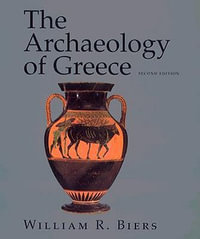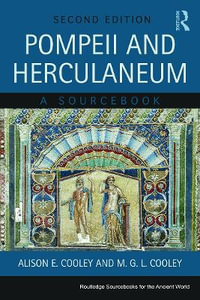List of Illustrations
List of Tables
List of Contributors
Preface
Foreword (Roeland Paardekooper, EXARC, Netherlands)
Acknowledgements
Introduction
Introduction: The Past, Present, and Future Role of Experimentation in Roman Studies
Lee Gra±a Nicolaou (University of Bologna, Italy), Tatiana Ivleva (University of Newcastle, UK) and Bill Griffiths (Tyne and Wear Archives and Museums, UK)
Part I: Experimentation as a Tool for Academic and Public Engagement
Chapter 1: Towards Sets of Guidelines for Roman Re-enactment and Reconstruction Archaeology â" revisited
Bill Griffiths
Chapter 2: Doing (Roman) History: Blurring the Lines between Academics, Reenactors and Artisans
Anique Hamelink (Tyne and Wear Archives and Museums, UK)
Chapter 3: Popularising Local Archaeology via Roman ExperimentatioN: The âMan and Iron in the First Centuries Projectâ in Poland
Andrzej Przychodni (Historical and Archaeological Museum in Ostrowiec Swietokrzyski, Poland)
Chapter 4: The Influence of Experimental Workshops on Archaeological Communities: The Impact of âTRACampâ
Matthew Mandich (Independent Researcher, UK)
Part II. Rebuilding the Past: Architectural Reconstructions and Open-air Museums
Chapter 5: Adventures with a Hypocaust and Mass wall Cob Walling
Richard Brunning (South West Heritage Trust, UK)
Chapter 6: Mind the Gap(s): Theoretical and Hands-on Approaches to the Production of Roman Brick and Tile
Tim Clerbaut (Ghent University, Belgium), Thomas Hauck (Vicus Eisenberg, Germany), Anna Langgartner (Museum Roman Fort Saalburg, Germany) and R¼diger Schwarz (Museum Roman Fort Saalburg, Germany)
Chapter 7: Rammed Earth, Hand-hewn Timber, and Wood-fired Tiles: The Physical reconstruction of Three Roman Craftsmen Houses at Xanten, Germany
Peter Kienzle (Xanten Archaeological Park, Germany)
Chapter 8: The Oil Merchantâs House in the Roman City Quarter of Carnuntum
Marion Grossmann (Carnuntum, Austria)
Part III. Actualistic Experiments: Activities, Processes and Chains of Production
Chapter 9: Ancient Fish Sauce at the Roman Table: Identifying Archaeological Traces of Ancient Recipes via Experimental Research into the Use and Deposition of Cooking Wares
Sally Grainger (Independent Researcher, UK), Edward Biddulph (Oxford Archaeology, UK), Simona Mileto (Independent Researcher, Spain) and Alessandra Pecci (University of Barcelona, Spain)
Chapter 10: The Panis Quadratus: Form, Flour, and Tools of the Trade
Farrell Monaco (University of Leicester, UK)
Chapter 11: Roman Leather Manufacture and the Archaeological Record: An Experimental Approach
Hrafnhildur Helga Halld³rsd³ttir and Gillian Taylor (Teesside University, UK)
Chapter 12: Off with their Heads! Broken Figurines and Religious Practice in Roman Britain
Matthew Fittock (Finds Liaison Officer for Bedfordshire and Hertfordshire, UK)
Chapter 13: An Experimental Approach to the Study of the Roman Oil Lamp
Caitlin Lobl (University College Dublin, Ireland)
Chapter 14: The Role of Interdisciplinary Experiments in Developing Untested Theories: The Application of Engineering and Digital Approaches in the Study of Roman Dyeing Vats from Pompeii
Heather Hopkins (Independent Researcher, UK)
Chapter 15: Testing Ethnographic Hypotheses with Reconstructed Artefacts: Replicated Lead Fishing-net Weights and their Use on Cast-nets
Lee Gra±a Nicolaou (University of Bologna, Italy)
Part IV. Experiencing the Past: Sensory Experiences and Interpretations
Chapter 16: Approaching the Romano-British Glass Bangle Craft with a Craftsperson Perspective
Tatiana Ivleva (University of Newcastle, UK)
Chapter 17: Reconstructing Recipes from Apicius: Professional Observations on Practices, Consistencies and Successes
Jill Hatch and Mark Hatch (Taste of History, UK)
Chapter 18: The Price of a Mile. Marching and its Impact on the Soldier: An Approximation to the Republican Army through an Experimental Perspective
Jose Miguel Gallego (University of Barcelona, Spain, Eduard Ble (University of Barcelona, Spain), Pau Vald©s Matas (Independent Researcher, Spain), and Mara Martnez-Esparza (Medical School of the Murcia University, Spain)
Chapter 19: Identifying Severe Hair Loss via the Reproduction of Known Roman Hair Styles: The Case of Julia Domna
Janet Stephens (Independent Researcher, USA)
Chapter 20: Interpreting Clothing of the Late Antique Period: The Role of Experimental Archaeology
Faith Pennick Morgan (Independent Researcher, UK)
Part V. Digital technologies: 3D reconstructions and gaming
Chapter 21: 3D Reconstructions as an Educational Tool
Matthew Nicholls (University of Oxford, UK)
Chapter 22: Methods and Applications of 3D digital Reconstructions: The Roman Fishponds of Maritime Villas in Southern Latium
Roberta Ferritto (University of Bologna, Italy, and UPenn, USA)
Chapter 23: Shedding Light in Roman Houses: Using 3D Reconstructions to Analyse the Use of Natural Light
Lucia Michielin (University of Edinburgh, UK)
Chapter 24: Digital Reconstructions as a Method to Test the Feasibility of Multiple Interpretations of Archaeological Artefacts as Illustrated by a Case Study of a Belt-like Object from Second Century CE Vimose
Martijn Wijnhoven (Institute of Archaeology of the Czech Academy of Sciences, Czech Republic), Aleksei Moskvin and Mariia Moskvina (Saint Petersburg State University of Industrial Technologies and Design, Russia)
Chapter 25: Rome was not Built in a Day: Reimagining the Roman Empire in Video Games
Aris Politopoulos, Angus Mol (Leiden University Netherlands), Corine Gerritsen (Independent Researcher, Netherlands) and Omar Bugter (Independent Researcher, Netherlands)
Chapter 26: The Missing Dead: Reconstructing the Past through Digital Gameplay at Roman Vindolanda
Barbara Birley (Vindolanda Trust and Roman Army Museum, UK), Claire Stocks (University of Amsterdam, Netherlands) and Richard Davison (Newcastle University, UK)
Concluding chapter
Re-imagining the Roman past
Andrew Gardner (University College London, UK)
Notes
Index
























